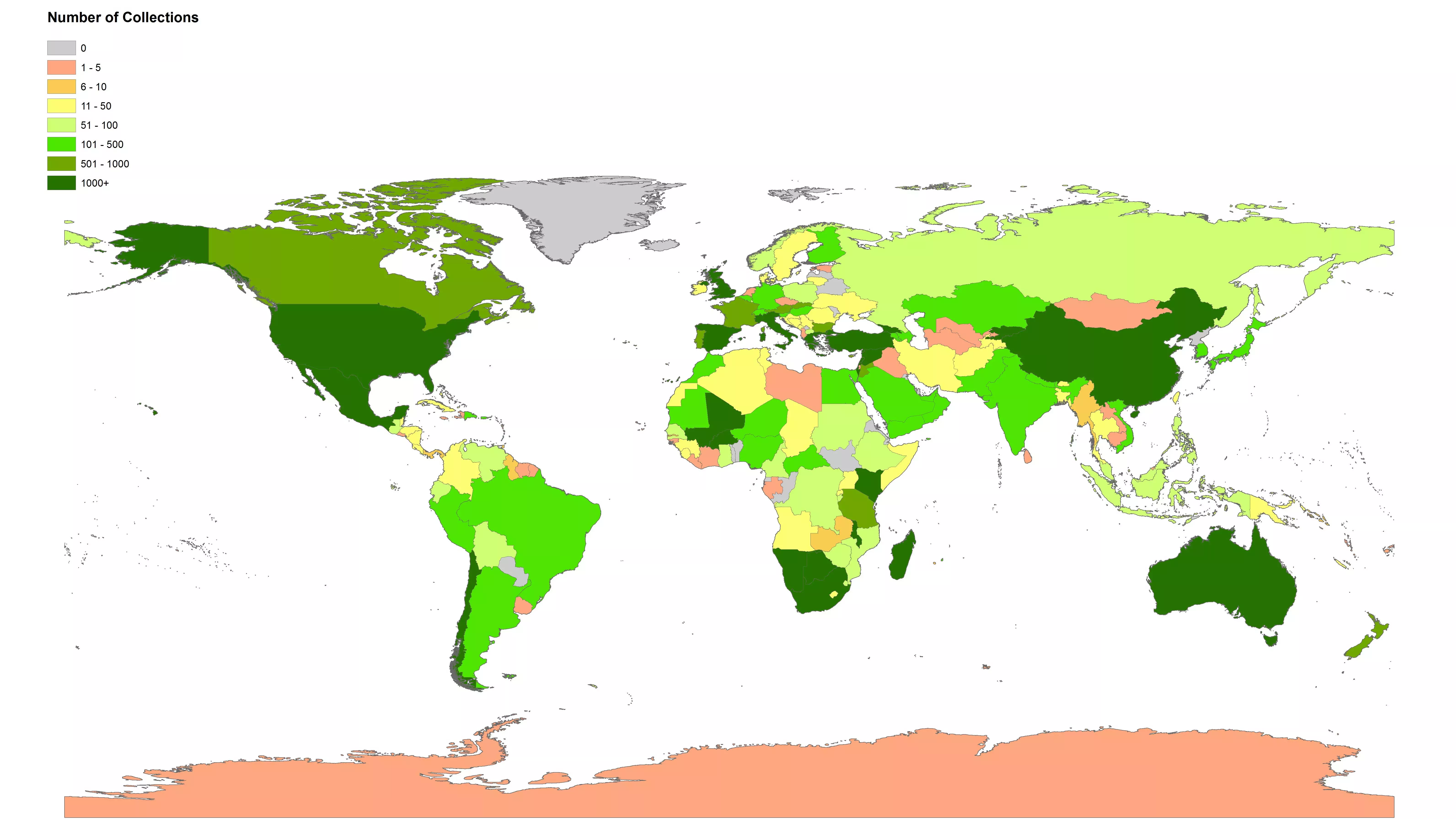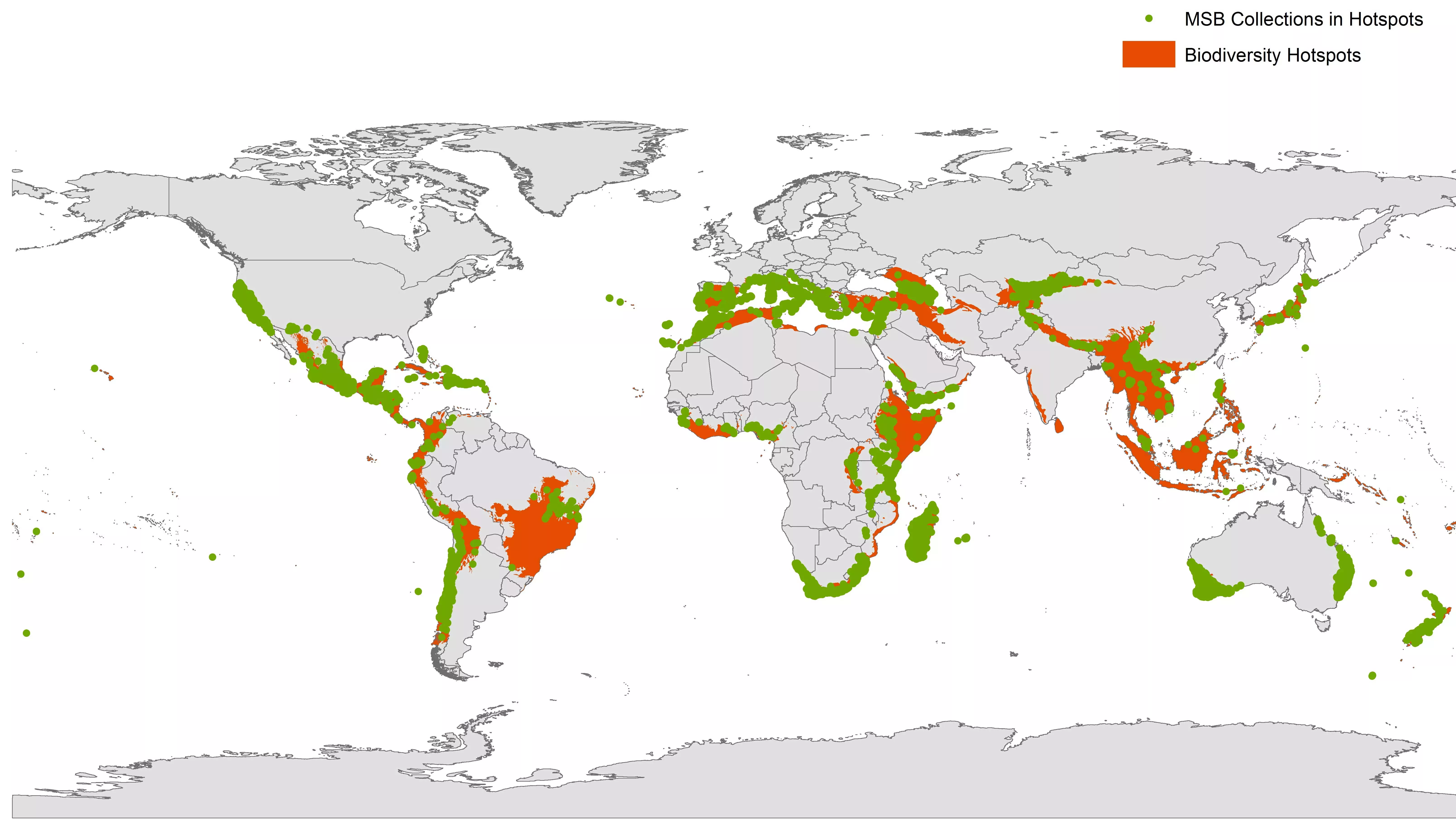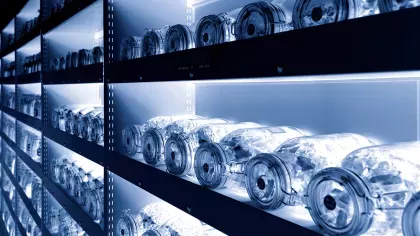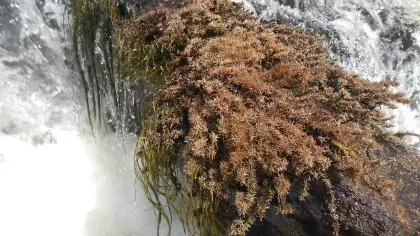28 June 2018
The tale of the sleeping beauties unveiled
Kew scientists delve deep into the seed vault of Kew’s Millennium Seed Bank to uncover the conservation value of the seeds stored at -20°C.

Seed banking
Seeds stored in the Millennium Seed Bank vault are collected from wild plants: over 39,000 species and sub-species (known collectively as taxa) from across the globe.
Drying and storing these seeds at low temperatures extends their lifespan from tens to hundreds, if not thousands, of years.
With one in five plant species currently threatened with extinction, the Millennium Seed Bank provides an insurance policy in case extinction in the wild occurs.
Frozen in time, seeds are stored in air-tight glass containers stacked in huge -20°C freezers. These time travellers offer future possibilities for both research and conservation, and can be used to grow a new generation of plants.
Seed banking is a key part of Kew’s Science and Collection Strategies, and contributes to Target 8 and 9 of the Global Strategy for Plant Conservation.
We continue to safeguard plant diversity worldwide with a focus on plants most at risk and most useful for the future, addressing global challenges for food security, sustainable energy, loss of biodiversity and climate change.

Plant diversity at the MSB
The seed collection at the MSB is constantly growing.
With over 82,000 collections currently stored in the bank, it’s important to know the extent to which plant diversity is represented and how this is contributing to safeguarding our planet and the survival of humankind.
It also helps us to target specific ecosystems, habitats and plant communities for future seed collecting trips.
Measuring the natural capital and conservation value of our collections
At the MSB, scientists evaluate the value of each collection by assessing:
- whether the seeds are collected from natural habitats
- whether the collections signify the plant’s diversity across the world
- whether the collections represent plant taxa that are endangered or vulnerable to extinction in their natural habitat
- whether the plant taxa are geographically unique as they only occur in a defined geographic location (so called ‘endemics’)
- the usefulness of collections to future generations in terms of their economic, ecological, social, cultural or scientific value (e.g. food, bee friendly plants, material, fuels, social uses, poisons, medicine, environmental uses and gene source)
- the use of collections for conservation, research, education and display.
Placing a monetary value on these collections is difficult. A recent estimate suggested that the potential value of benefits from just the collections of the wild relatives of our favourite crops held at the seed bank, could be worth as much as $120 billion. The entire MSB collection is a successful output of a global ex situ conservation programme, and an extremely valuable biological resource.

The largest and most diverse wild seed bank in the world
The seed bank is the ex situ home for over 82,556 collections of over 39,000 species.
There is often more than one collection of each species to represent the genetic and geographic diversity within the species.
These collections represent a significant global conservation resource available to organisations across the world. Below are a few facts and figures about the MSB.
- Rich natural resource: About 92 per cent of the collections originate from natural or semi-natural habitats (natural resource) and eight per cent from cultivated habitats such as plantations, orchards or plant nurseries (cultivated resource).
- Substantial plant diversity: Collections belong to 365 plant families, 5,813 genera, 36,975 species and 39,669 taxa.
- Wide geographic range: Collections originate from 189 countries and territories, representing all nine bio-geographic regions and all 35 of the world’s Biodiversity Hotspots.
- Notable vulnerability to extinction: At least 10 per cent of taxa conserved are either extinct (nationally) or rare or vulnerable to extinction in their natural habitats at the global and/or national scale.
- Uniqueness and irreplaceability: At least 20 per cent of taxa conserved are unique as they only occur in a defined geographic location (endemic).
- Significant value: At least 32 per cent of taxa, have at least one identified use to humans and overall, at least 74 per cent of taxa conserved are either Endemic, Endangered or Economically important (‘3E taxa’).
- Widely used: Over the 17-year period 2000–2017, more than 11,182 seed samples, representing 12 per cent of taxa, have been distributed globally to over 410 organizations across 57 countries for conservation, research, education and display.

Conservation implications
Seed collections represent a priceless resource for conservation and research. They also lie at the heart of Kew’s strategic aim to be a global resource for plant and fungal knowledge. Going forward, we will be focussing our efforts on increasing the number of threatened species held in the seed bank, and also sharing our resource for both research and conservation purposes across the world.
If you would like to know more about how to request seeds for research or conservation purposes, visit the Seed List.
We thank all the funders, members of the Millennium Seed Bank Partnership, and Kew staff whose support has made the Millennium Seed Bank’s collections possible.
References
- Li, D.Z. & Pritchard, H.W. (2009). The science and economics of ex situ plant conservation. Trends Plant Sci14:614–621
- Liu, U., Breman, E., Cossu, T.A. & Kenney, S. (2018). The conservation value of germplasm stored at the Millennium Seed Bank, Royal Botanic Gardens, Kew, UK. Biodiversity and Conservation 27:1347–1386. Available online
- PwC (2013). Crop wild relatives. A valuable resource for crop development. Available online





